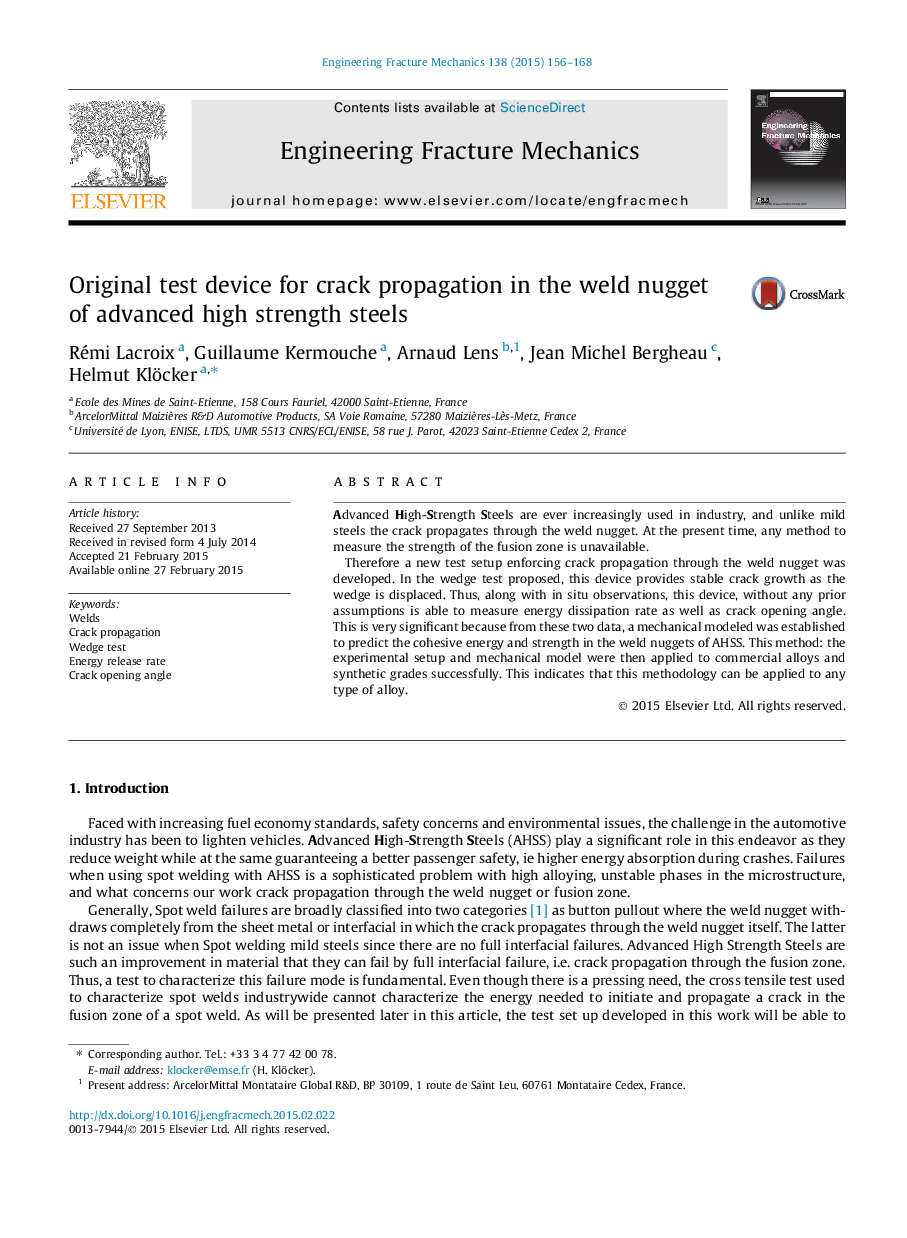| Article ID | Journal | Published Year | Pages | File Type |
|---|---|---|---|---|
| 770257 | Engineering Fracture Mechanics | 2015 | 13 Pages |
•We developed a new wedge test allowing stable crack propagation with in situ optical observation.•Stable crack propagation in the fusion zone of welds is characterized experimentally by two measures: the global energy dissipation rate and the crack tip open angle (CTOA).•The knowledge of the global energy dissipation rate and the CTOA allows a finer classification of industrial spot welds than the cross tensile test.•A mechanical model coupled with the new experimental set-up allows determining reliable values for cohesive zone models.
Advanced High-Strength Steels are ever increasingly used in industry, and unlike mild steels the crack propagates through the weld nugget. At the present time, any method to measure the strength of the fusion zone is unavailable.Therefore a new test setup enforcing crack propagation through the weld nugget was developed. In the wedge test proposed, this device provides stable crack growth as the wedge is displaced. Thus, along with in situ observations, this device, without any prior assumptions is able to measure energy dissipation rate as well as crack opening angle. This is very significant because from these two data, a mechanical modeled was established to predict the cohesive energy and strength in the weld nuggets of AHSS. This method: the experimental setup and mechanical model were then applied to commercial alloys and synthetic grades successfully. This indicates that this methodology can be applied to any type of alloy.
